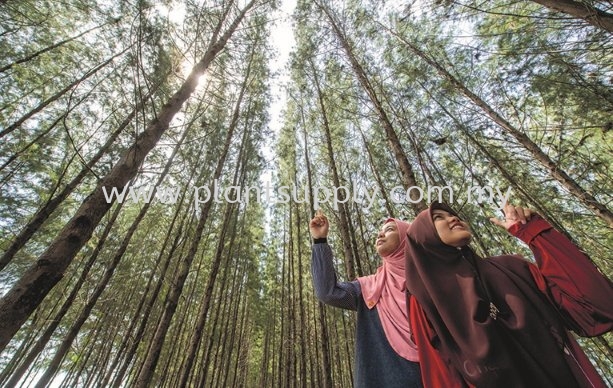'Nami Island' Kelantan

The rows of Casuarina equisetifolia trees beautifully lined are enough to spur excitement in anyone as soon as they reach Senok Beach, often nicknamed “Nami Island of Malaysia’, which is almost comparable to the Nami Island in Korea :)
Well-known among local and foreign tourists, the beauty of the casuarina equisetifolia trees alone is enough to attract visitors who want to take selfies, have a picnic with family, chill with friends and celebrate birthdays. Even newlyweds use it as background for their wedding photography sessions.
Kelantan Tourism Information Centre principal assistant secretary (Tourism and Culture) Nik Mahmud Nik Jaffar said with about 4,344 of casuarina equsetifolia and eucalyptus trees were planted along the coast since 2009 and 400 new seeds added in December last year, the beach promised much potential.
“Many locals refer to the beach as the Malaysian version of the ‘Nami Island’ in Korea. What was once a fishermen’s village has now become a tourist attraction following this new nickname,” he told Bernama in Bachok, Kelantan, on Sunday.
Nik Mahmud said the transformation of natural beauty there has provided a new source of livelihood because with the arrival of tourists, the locals get to trade, including food and products of small and medium enterprises.
“The casuarina equisetifolia trees were originally planted by the Kelantan Forestry Department under the Coastal Area Conservation Programme to prevent coastal erosion and flooding.
“As these casuarina equisetifolia and eucalyptus trees grow taller and mature, they provide a stunning landscape in Pantai Senok. Other specialities such as food and beverages, including ‘Maggi Telur Sotong’, ‘Maggi Ketam’ and ‘Mee Celup’ (similar to Thai soup noodle) add to the attraction,” he said.
“At Nami Island, the facilities provided are complete and organized; there are pedestrian walkways, signboards with lots of information, halal restaurants, suraus, libraries and cafeterias.
Visitors are also eager to check out the smallest lighthouse located on the edge of Senok Beach on the rock embankment. There are also remains of the Japanese landing site bordering Kuala Pak Amat, Sabak, which used to be a fishing spot.

